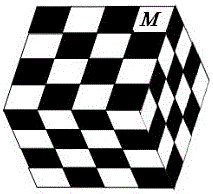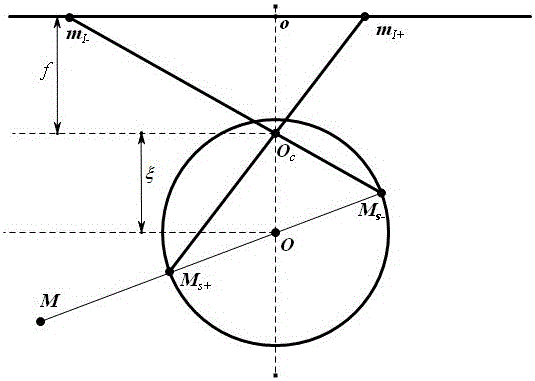Method of utilizing projection matrix of Veronese mapping checkerboard to calibrate central catadioptric camera
A projection matrix and refraction technology, applied in the field of computer vision, can solve problems such as data loss
- Summary
- Abstract
- Description
- Claims
- Application Information
AI Technical Summary
Problems solved by technology
Method used
Image
Examples
Embodiment
[0090] The present invention proposes a method for linearly estimating the projection matrix of space checkerboard imaging based on Veronese mapping and using DLT method to solve the internal parameters of the central catadioptric camera. The experimental template structural schematic diagram that the present invention adopts is as figure 1 shown. The implementation of the present invention will be described in more detail with an example below.
[0091] The experimental templates used in the calibration of hyperbolic reflex cameras based on space checkerboard are mutually perpendicular in space. block checkerboard, such as figure 1 shown. Utilize the method in the present invention to calibrate the hyperbolic reflection camera for experiment, concrete steps are as follows:
[0092] 1. Obtain the coordinate points of the checkerboard space and extract the corresponding image points from the image
[0093] Select 8 corner points on each face of the space checkerboard (th...
PUM
 Login to View More
Login to View More Abstract
Description
Claims
Application Information
 Login to View More
Login to View More - R&D
- Intellectual Property
- Life Sciences
- Materials
- Tech Scout
- Unparalleled Data Quality
- Higher Quality Content
- 60% Fewer Hallucinations
Browse by: Latest US Patents, China's latest patents, Technical Efficacy Thesaurus, Application Domain, Technology Topic, Popular Technical Reports.
© 2025 PatSnap. All rights reserved.Legal|Privacy policy|Modern Slavery Act Transparency Statement|Sitemap|About US| Contact US: help@patsnap.com


